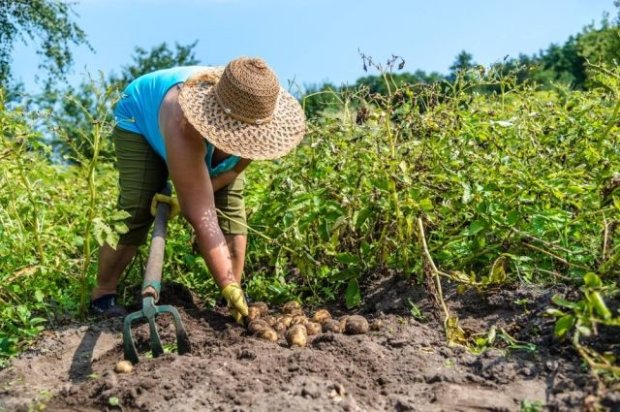Hilling involves gathering soil around the root system of potatoes. Soil is heaped from all sides of the plant, creating a ridge of loose earth.

This layer serves several important functions:
- Moisture retention: The ridge holds moisture in the lower layers of the soil, which is especially crucial during dry periods.
- Temperature regulation: Loose soil helps maintain a stable temperature at the roots.
- Improved growing conditions: A favorable environment is created for tuber formation.
Is hilling necessary?
While hilling has numerous advantages, it cannot be deemed strictly essential. Potatoes can grow without this procedure, but if your goal is a rich and high-quality harvest, it is not advisable to skip this step.
Benefits of hilling potatoes
Increased yield:
Hilling promotes the growth of tubers in the "nest" under the ridge, which increases their quantity and size.
Soil oxygen enrichment:
Loose soil allows the roots to receive more oxygen, which is vital for their development.
Protection against greening:
The soil completely covers the tubers, preventing them from coming into contact with sunlight, which causes them to green and become inedible.
Disease prevention:
Loose soil reduces the risk of fungal diseases.
During hilling, weeds that may carry harmful fungi are eliminated.

How to properly hill potatoes?
To achieve maximum effectiveness, hilling should be carried out in several stages:
-
First hilling:
-
Performed when the potato stems reach a height of 15-20 cm.
-
The soil is heaped around the plants, forming the initial ridge.
-
-
Second hilling:
-
Carried out 2-3 weeks after the first.
-
The ridge is increased, completely covering the lower part of the stems.
-